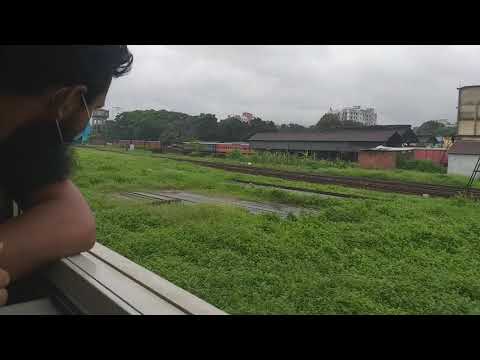Bangladesh Railways is the state-owned railway company in Bangladesh. It operates and maintains the entire railway network of the country. The railway network in Bangladesh spans over 2,855 kilometers, connecting major cities and towns across the country.
If you are planning a journey by train in Bangladesh, here are some things you should know:
Types of trains: There are different types of trains available in Bangladesh, including express trains, mail trains, commuter trains, and intercity trains.
Ticket booking: You can book train tickets online through the Bangladesh Railway e-ticketing website, or by visiting the nearest railway station. It’s recommended to book your ticket in advance, especially during peak season.
Train schedules: You can check the train schedules on the Bangladesh Railway website or inquire at the railway station. Train schedules can sometimes change due to unforeseen circumstances, so it’s always best to double-check before your journey.
Classes of travel: There are several classes of travel available on Bangladesh trains, including first class, second class, and third class. The facilities and comfort levels vary depending on the class of travel.
If you’re referring to train travel in Japan, then I can certainly help you with that!
Japan has an extensive and efficient rail network, with both local and long-distance trains running throughout the country. Here are some things to keep in mind when traveling by train in Japan:
Types of trains: There are different types of trains in Japan, including shinkansen (bullet trains), limited express trains, express trains, and local trains. Shinkansen are high-speed trains that connect major cities, while limited express and express trains are faster than local trains and stop at fewer stations.
Ticket booking: You can purchase train tickets in Japan at the train station ticket office, ticket vending machines, or online through various websites. It’s important to note that some trains require seat reservations, which can be made at the ticket office or vending machine.
Train schedules: Train schedules in Japan are very reliable and are usually adhered to very strictly. You can check train schedules online, at train stations, or through apps like Hyperdia or Google Maps.
Classes of travel: There are several classes of travel available on Japanese trains, including first class (Green Car), reserved seats, and unreserved seats. The facilities and comfort levels vary depending on the class of travel.
Luggage allowance: Passengers are allowed to carry luggage up to a certain weight limit, depending on the class of travel. It’s important to keep your luggage with you at all times, as luggage storage is limited on trains.
Safety measures: Safety is taken very seriously on Japanese trains, with strict rules regarding behavior and etiquette. It’s important to be mindful of these rules, which include not talking on the phone or playing music loudly, and not eating or drinking in some sections of the train.
I hope this information is helpful for your travel planning in Japan. If you have any further questions, feel free to ask
As of my knowledge cutoff date of September 2021, the fastest rail in the world is the Maglev train in Japan. Maglev stands for “magnetic levitation” and refers to trains that use powerful electromagnets to lift and propel them along the track. The Maglev train in Japan has achieved a top speed of 603 km/h (375 mph) during a test run in 2015, making it the fastest train in the world.
However, it’s important to note that the Maglev train is currently only in operation on a limited scale in Japan, between the cities of Tokyo and Nagoya. The majority of train travel around the world is still done on conventional trains that use steel rails, and the fastest of these can reach speeds of up to around 350 km/h (220 mph), such as China’s Shanghai Maglev train.
It’s worth noting that new technologies and innovations in rail travel are constantly being developed, so the fastest train in the world may change in the future.As of my knowledge cutoff date of September 2021, the fastest high-speed train in the world is the Shanghai Maglev train in China, which can reach a top speed of 431 km/h (267 mph). The Shanghai Maglev train runs between Shanghai’s Pudong International Airport and the Longyang Road station in the city center.
Other high-speed trains around the world include the Fuxing Hao train in China, which can reach speeds of up to 400 km/h (248 mph), the TGV in France, which can reach speeds of up to 320 km/h (199 mph), and the Shinkansen in Japan, which can reach speeds of up to 320 km/h (199 mph) on some lines.
It’s worth noting that new high-speed train technologies are constantly being developed and implemented around the world, so the fastest high-speed train may change in the future..

